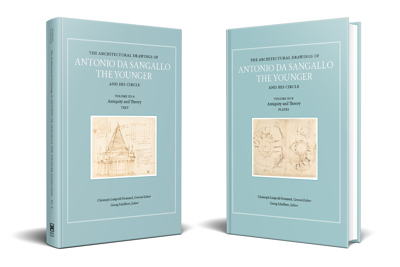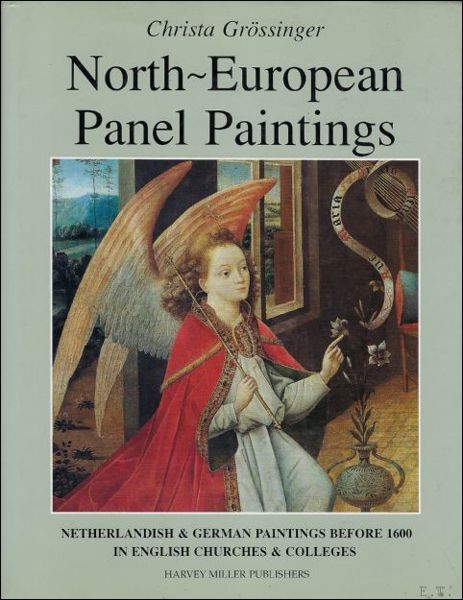
The Architectural Drawings of Antonio da Sangallo the Younger and His Circle
Vol. III: Antiquity and Theory
Christoph Frommel, Georg Schelbert (eds)
- Pages:2 vols, 584 p.
- Size:216 x 280 mm
- Illustrations:528 b/w
- Language(s):English
- Publication Year:2023
- € 250,00 EXCL. VAT RETAIL PRICE
- ISBN: 978-1-912554-39-3
- Hardback
- Available
This volume completes the catalogue of the Sangallo workshop drawings collection housed at the Uffizi Gallery in Florence.
"(...) this new catalogue (...) throws a great deal of new and much-needed light on the nature of archaeological enquiry during the early decades of the sixteenth century. It supplies an immense amount of new information and interpretative comment, providing a new platform for future studies. Above all, and in line with Frommel’s correct conclusion, it firmly establishes Sangallo’s central position in the astonishing changes that occurred over a remarkably short period of time in the Renaissance understanding of Antiquity." (David Hemsoll, in The Burlington Magazine, vol. 166, June 2024, p. 650)
Christoph Luitpold Frommel has held academic posts in Bonn, Princeton, Berkeley and Rome. He was director of the Bibliotheca Herziana in Rome from 1980 to 2001.
Georg Schelbert is Head of the Media Library at the Humboldt-Universität zu Berlin.
These volumes complete the catalogue of the Sangallo workshop drawings collection housed at the Uffizi Gallery in Florence. Antonio da Sangallo the Younger (1484-1546) and his workshop were involved in St. Peter’s Basilica, the Palazzo Farnese, and Villa Madama in Rome; vast fortification projects in Castro, Florence, Perugia, and Rome; and dozens of other secular and religious buildings throughout Italy. After Bramante, it was the Sangallo workshop that most strongly influenced sixteenth- and seventeenth-century Italian architecture. Andrea Palladio, Giacomo della Porta, Carlo Maderno, Francesco Borromini and Gianlorenzo Bernini are among those indebted to him. In all of the projects touched by the Sangallo workshop one senses an intense laboratory in action. This volume focuses on the study of ancient architecture, as well as the drawings for palaces and the Vatican. An international team of scholars has written entries for the drawings. The volume also includes essays by Christoph L. Frommel and Pier Nicola Pagliara, as well as a translation of the Codex Stosch-Rothstein by Ian Campbell.





